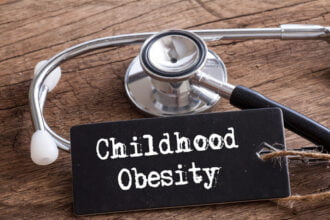In 1956, doctors at the Chisso Corporation factory hospital in Minamata, Kumamoto, Japan, received a 5 year old patient with puzzling symptoms; the young girl exhibited convulsions as well as difficulty walking and speaking. When her sister arrived at the hospital with the same symptoms – and the girls’ mother mentioned that neighbors had been experiencing the same for some time, doctors launched a larger investigation. What they found was not only troubling, but led to the uncovering of one of the largest mass poisonings of all time.
First thought to be a contagious disease, what came to be known as Minamata Disease caused a neurological syndrome that led to muscle weakness, vision problems, hearing and speech damage, paralysis, coma, insanity, and even death. Caused by the Chisso Corporation’s release of mercury and other industrial chemical byproducts in waterways, Minamata Disease made its way into the local human and animal populations as each ingested shellfish and fish from Minamata Bay. These fish bioaccumulated the mercury and resulted in toxic mercury levels of many area residents. Officially, the poisoning affected 2,265 human victims before 1968 and killed 1,784; however, congenital mercury poisoning continues to affect the area, and cat, dog, and human deaths occurred for over 30 years.
Isolating the Source
In 1968 – and through the 1990s – scientists argued that Minamata Disease was caused by the Chisso Corporation producing methylmercury and pouring it into Minamata Bay. Studies performed since agreed, noting that methylmercury had been found in sludge from the bay, shellfish samples, and even umbilical cords from babies born at the time. In addition, a Minamata doctor fed wastewater to two cats, noting that their behavior and the resulting brain lesions he observed after autopsy were consistent with methylmercury poisoning.
Now, however, advances in the technology scientists use to study the molecular fingerprints certain substances leave on the brain have helped researchers challenge that assertion. If the hypothesis proves correct, then advances in toxicity screening using single cell analysis via a 96 well plate dispenser will likely produce new information about how an alternative, organic mercury compound acts upon mammal neurological systems.
New Research
Researchers at the Stanford Synchrotron Radiation Lightsource have employed a technique that involves exposing the existing brain tissue samples from one of the original cats to extensive x-ray radiation and analyzing the resulting light spectrum. They’ve found that most of the molecules within the cat’s brain consist of alpha-mercuri-acetaldehyde, an organic compound that likely originated in the wastewater from Minamata Bay. This finding and its interpretation that the poisonings may have been caused by this compound directly opposes the longstanding views that Minamata Disease is caused by methylmercury.
Methylmercury as a toxic compound has been under scrutiny since the 1980s, when teams of researchers began to evaluate how methylmercury bioaccumulated in seafood could harm humans who eat shellfish and fish. During that time, the Environmental Protection Agency took a safe approach and set an extremely low threshold for the presence of methylmercury in seafood. Some researchers fear that the new Minamata cat study could be used to relax these thresholds.
The Future of Methylmercury and Toxicity Research
Even as the Stanford team continues its research into alpha-mercuri-acetaldehyde, procuring human samples in hopes of discovering whether or not the compound is present in other species as a result of the Minamata disaster, other researchers point to recent proof of methylmercury toxicity. They cite a 2015 study, among others, that proves mammalian neural cell cytotoxic effects of methylmercury, and insist that EPA standards restricting methylmercury should not be lifted. In fact, these researchers cite a subsequent 1971 industrial poisoning incident in Iraq involving methylmercury – proof that no matter the compounds present in the Minamata incident, methylmercury is extremely dangerous.
While questions regarding the source of Minamata Disease may have been raised by this new finding, more information is needed. As a result, toxicity research regarding both alpha-mercuri-acetaldehyde and methylmercury using mammalian cell lines will likely continue. What’s clear is that scientists on both sides of the debate endeavor to prevent horrific poisoning events like the Minamata disaster from ever occurring again.








